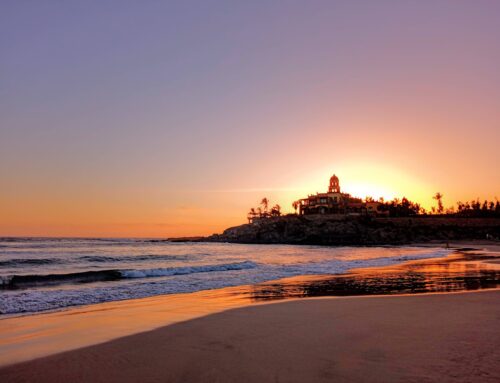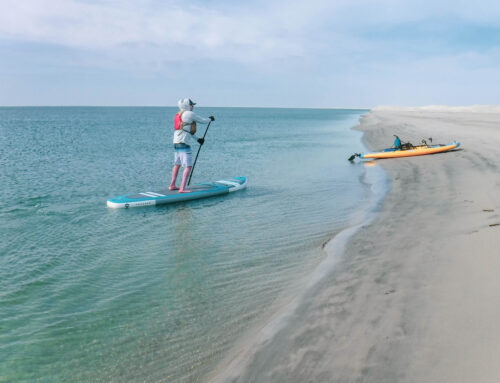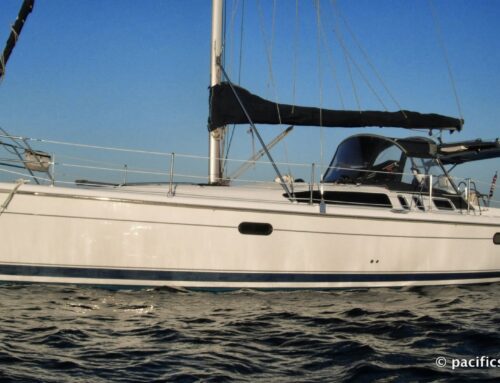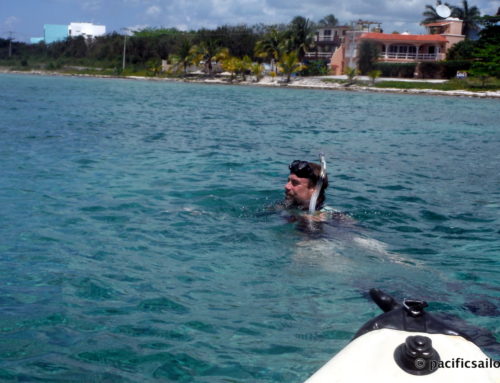We just arrived in Cabo San Lucas. What a crazy place after the peaceful anchorages we’ve had mostly to ourselves over the past few weeks. So, why are we here? We’re on our way north!
After a year and a half of living and cruising around Mexico we’ve decided it’s time to head back to the good ole US of A for a while and maybe restock the kitty. Maybe do a little land travel.
Going back to the states from the Sea of Cortez is not as simple as it sounds. We have to do the “Baja Bash”: One thousand miles of deserted coast-line along the Baja peninsula bashing into wind, waves and current. And a couple of big capes to make things really interesting.There are few stops and even fewer services. We won’t be able to do much sailing and there is really only one for sure place to buy diesel – luckily it’s about half way.









I just came across this in Latitude 38: The Clipper Route was popular with square-riggers of the 1880s because they didn’t sail to weather well and because they didn’t have engines. Indeed, there are accounts of old-time sailing ships taking three weeks to make 10 miles to the good along the coast of Baja. So the clipper ships would head off the Mexican coast on starboard tack until they started getting lifted. Usually this would mean initially having to sail almost southwest, which was about 90 degrees off course from their ultimate destination. And usually they wouldn’t start getting lifted very much by the northeast trades until they were 500 or more miles due west of where they’d started from. They’d then stay as hard on the wind as possible until they got far enough north that they could flop over onto port in northwesterlies, again hard on the wind, to lay their intended landfall. Because you usually can’t flop over until you get pretty far north, the Clipper Route makes more sense the farther north you want to go. For instance, it makes a lot of sense if you need to get to Seattle from Cabo, but almost no sense if you just need to get to San Diego.
Hey guys! Been following yall for a while and really enjoyed every minute and learned a lot! You’ve helped me make the decisionto go onto the water finally, after a lifetime of wanting to.
Hate to hear Camille is up for sale, but I DO understand the “restock the kitty” motivation…
Stay safe!
I, too, was wondering if it were possible to do a long tack to avoid the bashing, but the above comment answered my question. Will do a little dance for ‘no wind’ for you.!
Many sailors prefer the Clipper Route option, heading offshore toward Hawaii (even losing latitude in the early going) until getting enough westing to begin getting lifted from the clocking winds. Once you’re about the latitude of San Diego you can come over to port tack and sail toward the coast.
This strategy will avoid the thrashing a vessel can take beating it’s way up the coast, and save a lot of diesel as well. If you’re thinking of selling the boat, that’s well-worth taking into consideration.
HOWEVER, you may have waited too late to make this strategy work. Hurricane season is here, and many people prefer to hug the coast in case they need to run for cover to escape a TS or a hurricane.
It’s a tough call, and I wish you the very best of sailing luck.
TaoJones